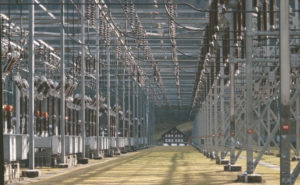Why power is critical to everything in a digital world
Why power is critical to everything in a digital world

Infrastructure systems around the world are being strained due to unprecedented urbanization, continued globalization, and climate change. In addition, developing countries are struggling to build new infrastructure, while developed countries must replace aging infrastructure.
Between now and 2030, an estimated minimum of $ 50 trillion in infrastructure investment is required to fuel global development. Cities such as Amsterdam are addressing these challenges in its Amsterdam Smart City initiative, launched in 2009, which includes 79 projects collaboratively developed by local residents, government, and businesses.
Improving efficiency of services, not just energy
A smart city should improve its quality of life through technology to improve the efficiency of services, especially for efficient transportation, intelligent buildings, and smart power grids. Many projects run on an interconnected platform through wireless devices to enhance a city’s real-time decision-making abilities.
See also: Will microgrids drive IoT in tomorrow’s cities?
These projects can reduce traffic, save energy, and improve public safety. The power of the data-driven world of the Internet of Things (IoT) is the promise that the consumer can finally take control of their environment. Whether travel, smart homes, or connected buildings, people are using the power of real-time sensors to understand and engage with their world.
One of the biggest opportunities is for people to finally be able to interact with the one element that controls everything: power. With access to real-time data and the emergence of the digital grid, consumers can finally take control of their power needs at the edge of the grid, and finally see the promise in a true two-way grid that first started with smart meters and now will be delivered with the smart grid.

Shalin Shah of Siemens
Digital grid use cases and applications vary in their potential to add value. The use cases in the energy industry can be generally divided into three levels that represent increasing levels of value:
Level 1: Modernizing infrastructure & improving operations
It may be easy to overlook the importance of modernizing existing power infrastructure, but the bottom line is that we cannot rebuild our power grid from scratch. We have to rely on intelligent technologies to improve the systems we have in place to improve power quality and security and continue to deliver safe, affordable, and reliable energy to consumers. Utilities are transforming while still performing. For example, a large percentage of BC Hydro’s smart meter program benefits are realized in revenue protection. IoT-connected devices with tighter security have the ability to give utilities unprecedented levels of control over their operations through improved hardware and digital technologies.
Level 2: Enhancing Efficiency & Cost Savings
Focusing on digital technology drives efficiencies across a utility’s business by increasing the opportunity to integrate new renewable generation and distributed energies into their system to help go beyond the scope of basic infrastructure and operations. Utilities are improving total uptime and reducing overall maintenance costs by deploying predictive maintenance analytics that increase the quantity and quality of maintenance schedules. For example, PPL Electric has reported a 38% improvement in service reliability enabled in part by the deployment of sophisticated analytical capabilities.

Level 3: Business transformation services for more value-added services
In the final level, the value to a utility goes far beyond basic operational enhancements or efficiency, ultimately leading to major change to the business value for the utility, typically reflected in the form of new products and services that are outside of the traditional utility model and offering more value-added services to consumers. The digital grid enables utilities to offer new services at both the wholesale and retail/consumer level by providing deeper insights on capacity demand, issue identification, pricing options, and more. Oklahoma Gas & Electric, in a bid to substantially shed load by 2020, is using customer analytics to gain visibility on individual customers’ responses to price signals. This is allowing them to identify the best customers to target with specific marketing campaigns.
To address the challenges described above and realize the full potential of a true IoT for smart energy, we need to modernize utilities’ infrastructure, improve operations and enhance efficiencies first, but the ultimate goal is to transform into a customer-centric company that can offer more value-added services to the end-consumers.
The post Why power is critical to everything in a digital world appeared first on ReadWrite.
(26)













